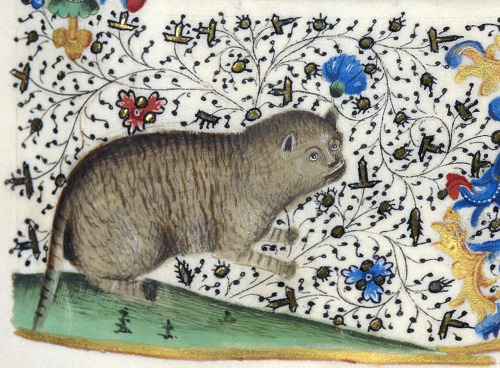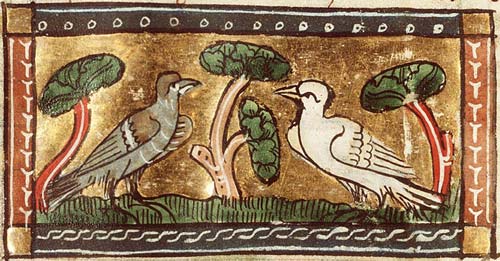
Auto Italia can be seen through a series of responsive, artificially intelligent, backlit screens. I had viewed it, many times, through my own screen. Fingerprint-smeared, sneeze-flecked, dust-smudged.
I had looked at the pictures they had made: there’s one I like of a tiny, kaleidoscopic insect with a half-moon exoskeleton and frilly antennae. It’s blurry because either the lens of the camera was dust-smudged, fingerprint-smeared, sneeze-flecked too when the picture was made, or because of something confusing to do with the pixels.
I had looked at Meet Z. S/he talked me through a landscape of moving images. I saw something that resembled a city, from when cities will look like cities of the future, and I saw an artificial sun that shone particularly brightly. (Backlit screens really are very effectively backlit these days.) When instructed, and when I felt it was appropriate to do so, I scrolled (“scroll now!” s/he insists) with my mouse that is not a mouse anymore but a flat, pearlescent pad in front of my screen. I clicked to remove unwanted obstacles, eyesores, from the otherwise orderly cityscape. Z praised me.
I am here to investigate possible points of contact between Auto Italia and my research, which is on the relationship between late-medieval towns (real ones that really existed) and the natural environment: rivers, trees, animals, that sort of thing. I read documents and stories that were written by people hundreds of years ago, with pens made from goose primaries on paper or mammal skin, treated, stretched, dried. Generally, however, when I can, I read reproductions and translations of these documents or stories on-line through my screen. It’s easier that way.

At Auto Italia we sit at desks and type. I am typing reports on various aspects of my research: information on the documents and stories I read; the interpretations of other people who read them; aspects of my research that might be interesting to people who spend their time making art…
Nobody here knows the first thing about the Middle Ages, I think to myself in a totally value-free, non-derisive manner.
I don’t have a clue about contemporary art, I think to myself derisively, panicking about my ability to produce anything meaningful during this month of collaboration.
I return to my typing. I think about how to phrase my reports in a way that is targeted towards a – what’s the phrase? – intelligent, non-specialist audience.
At the end of the office is a small, square window. The view should be of Bethnal Green. The actual green of the eponymous Bethnal Green (?), the one we walk around on our lunch-breaks, full of footballers and public sculptures. But it isn’t. The window is so dirty as to almost entirely obscure the view. Like, really dirty. So much dirtier even than my laptop screen. It looks like one of those windows on a theatre set when the design team doesn’t have enough time or money to produce a proper scene of the outside so they just put up some hazy glass with a really bright light behind. They do it all the time in sci-fi when they can’t think of what would feasibly be beyond the window of the spaceship. Or in gritty, all-in-one room dramas set in the mid-West of America. Bright sunshine hikes the tension. In bright sunshine the characters cannot hide from all those deep-seated anxieties they’ve bottled up since Act I.
There are the murky shadows of pigeons brooding on the outside windowsill. They think I can’t see them through the dirty glass so they go about doing all those things that pigeons only do when they think they can’t be seen.
I contemplate a quick Instagram. Pop that on the website.

I am looking at my screen trying to explain to an intelligent, non-specialist audience why the social, cultural, economic, political whatnot was very different in late-medieval towns from in late-medieval countryside. And what this meant for understandings of nature, and of things that are green, and of things that move around and reproduce but are not human. As far as I am concerned, to understand that, you need to know about a whole load of other stuff. Like riparian rights. And the language of waste. But I would say that, wouldn’t I.
I am trying to articulate the difference between a garden and a meadow. And why this mattered in the fourteenth-century. And why the fact it mattered in the fourteenth-century might matter now.
The medieval can be viewed through screens. The medieval cannot not be viewed through screens. Donna Haraway would say that once you have seen a screen, once you have interacted with a user interface, once you have done some clicking with that thing that used to be a mouse, you are a cyborg. Your chemistry changes. You can no longer see the world through the eyes of a person whose vision is not inflected by those flickering windows. Just as you cannot un-hear a piece of salacious gossip you didn’t want to know in the first place, you can’t wipe off the wholly twenty-first century experience of putting your thumb on the ‘Unbreakable’ Sapphire glass of your iPod Touch (how 2008) and swiping left or right.
So when I or you or he or she or they reads the Middle English Romance Amis and Amiloun (for e.g.) I or you or he or she or they cannot forget they live in a world where two clicks can take you to a street-view of, say, the Argentinian town of Ushuaia on the southern tip of the South American continent. And our understanding of Amis and Amiloun and the people who wrote and read Amis and Amiloun becomes slightly more removed. And this is neither a good thing nor a bad thing. Or it is both a good thing and a bad thing.
Of course I am hampered somewhat because I still have a handful of undergraduate essays to mark that obviously should have been finished last week like they would have been if they were being marked by a person who is vaguely competent.
“This essay is well-written and constructs sound arguments that are well-researched. The student has read a range of material and used a number of primary and secondary sources to nuance their ideas. There is real engagement with the key themes of the topic, and the essay retains its focus on the question.”
Somebody comes to the office for a meeting. She is hoping to work with Auto Italia on a project about science fiction. She mentions Donna Haraway too. I want to join in. They discuss a project about the transformation of bodies, of queerness, of short stories written by Octavia Butler. Somebody mentions Ursual LeGuin. I bloody love Ursula LeGuin. They go through the articles and stories written by academics and writers and think about how these ideas can be presented visually.
“There are some structural issues. Each paragraph contains many different arguments and they are extremely long. To take their writing to the next level, the student should take care to divide their argument into smaller, thematic paragraphs.”
M, M and E from Auto Italia, and their visitor, V, discuss their ideas gently. This is a research environment. It is a very different kind of research environment. All ideas are met with encouragement. Suggestions are followed by nods. Thoughts are allowed to ferment.
“Your arguments are all ridiculous and you have used absurd examples. P.S. That word doesn’t mean what you think it means.”
Joke: I would never speak to a student like that.
Foment.
Academia and Art are different. We are trained to criticise. That is the point of us. They are trained to encourage and create. That is the point of them.
I’m listening to that album by that group who try to replicate Electro music with only acoustic instruments. Except then obviously it’s recorded with digital apparatus, then sent through the world wide web to my computer, from which I listen through plastic, electronic headphones. I guess that’s half the point.
My typing turns into reports that can be read. Ideas to be discussed. Auto Italia will see the Middle Ages through my screen.
I receive an email from a friend I’m meeting this evening. It seems pertinent:

………………………………………….
Fiona Mozley is a PhD student in Medieval Studies at the University of York. She is currently undertaking a WRoCAH–funded residency with Auto Italia.